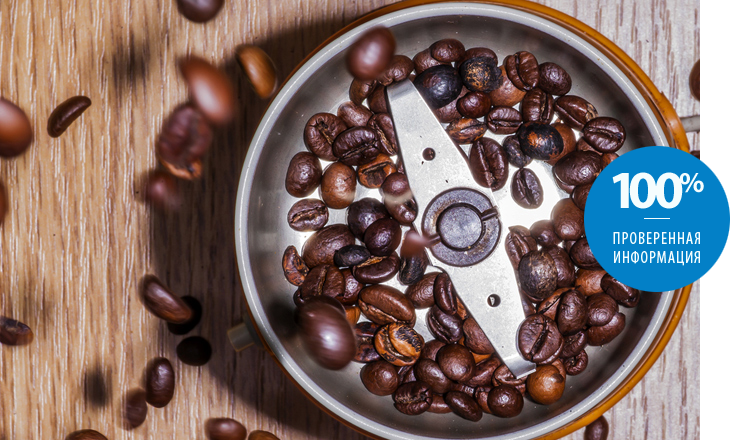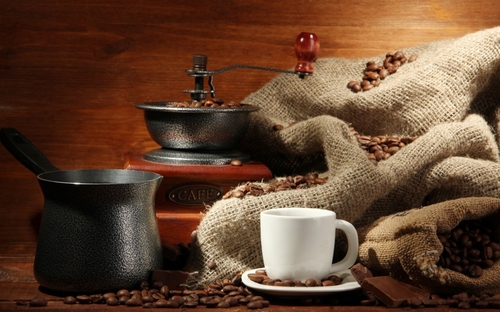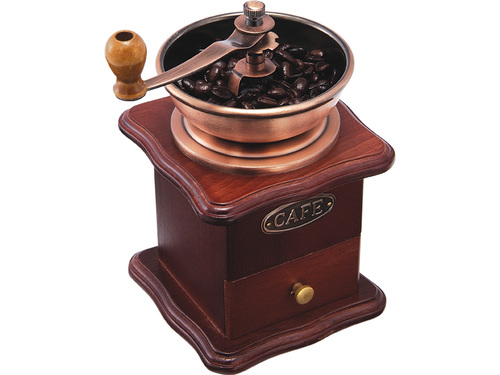
A cup of aromatic and invigorating coffee. Connoisseurs know that a drink made from grains will give a significant odds to soluble. Only freshly brewed coffee will demonstrate all the taste advantages: with tart notes and a pleasant aftertaste.
Long ago, when the grinder had not yet been invented, the grains were simply soaked in water. Then the Arabs began to crush them in a mortar, and in the 15th century they completely improved the mechanism and invented a box with millstones inside. The grinding was so fine, and the drink itself showed new taste lines. The coffee grinder even has its own birthday - April 3, 1829. Then the Englishman James Carrington officially patented the machine, grinding coffee beans.
Main selection criteria

In modern stores - a huge range of coffee grinders. From budget to expensive, from mechanical to electrical. One option for someone seems ideal, but for the other completely unsuitable. When choosing coffee grinders you need to consider several criteria.
Grain milling degree
So for cooking in the Turk you will literally need powder. For a french press, coarse fractions will do; an espresso will require a homogeneous mass of small particles. Different types of coffee grinders offer varying degrees of grinding.
Volume
On average, one mug needs 7-8 grams of powder. For one person, coffee grinders with a small bowl size are suitable; for a large family who prefer to drink coffee several times a day, a capacious container is required.
Price
Depends on the type of grinder. Mechanical hand - the cheapest. But electric, with a lot of additional functions, are much more expensive.
The main types of coffee grinders

Manual
Invented once by the Arabs and improved in our day machine. Square box with millstone inside and rotating top handle. To grind grains in a homogeneous mass is very difficult. Usually get quite large particles. The option is good for those who like to brew a drink in a french press, but is unacceptable for the Turks.
The burrs in manual coffee grinders are ceramic or metal. Ceramic is much better preserve and transmit the taste of coffee, metal - more durable, but bring to the drink foreign flavor. Disks are usually put in several positions. Long distance - for coarse grinding, minimum - for smaller particles.
Buyers recommend models Gipfel KS 833 BP and Peterhof PH-12721.
Rotary (knife)
Such a coffee grinder in its form resembles a shaker, and the device blender. Grains are poured inside the tank, in which powerful knives are already embedded. All this closes, as a rule, with a transparent lid and is ground at speed.
Capacity varies greatly: from 80 to 270 W. Low-power ones do not rotate fast, therefore they leave behind rather large particles. The volume of the container is also variable: from 30 to 120 grams. Here the choice depends on the required amount of coffee.
The body of the machine is most often plastic or steel. The latter will last much longer. Most modern models have additional features: double knives, comfortable bow tilt. Such options, in contrast to unimproved counterparts, are more expensive, but the improvements are virtually no effect on the grinding quality.
Advantages of rotary type coffee grinders: compactness, easy handling, reasonable price (from 400 to 3000 rubles).
Demand are models: BOSCH MKM-6000, BOSCH MKM 6003, Moulinex A 591, Bork CG MGN 922, Tefal GT-30083 E.
Electric or millstone
The smartest car. Works on the principle of manual, but the millstones are much more powerful and they rotate independently. Only here there are two bowls: one for the beans, the other for coffee. The machine offers 10 to 15 grinding options. All parameters are set immediately before operation.Capacity - up to 300 grams of grains. There are such models that you can set the number of cups and they will select the required number of grains. Considered the safest.
Most popular models: DeLonghi KG 89, Braun KMM 30, Kenwood CG 600, Gaggia MM Steel, DEX DCGM 12
The disadvantages of different designs
Manual:
- It is necessary to apply force. The hand gets tired, and the grinder constantly slides on the surface.
- You can not quickly make coffee. To grind grain take time. Not suitable for those who rush to work in the morning.
Rotary:
- It is impossible to fully control the grinding process.
- Not always uniform consistency.
- It is difficult to pick out coffee from under the knives, you can get hurt.
Millstones:
- There are no disadvantages as such. Before use, you must read the instructions to familiarize yourself with a variety of functions.
Regardless of the type in the coffee grinder can not grind: pepper, sugar, cereals. This will surely affect the taste of the coffee that is subsequently ground.
